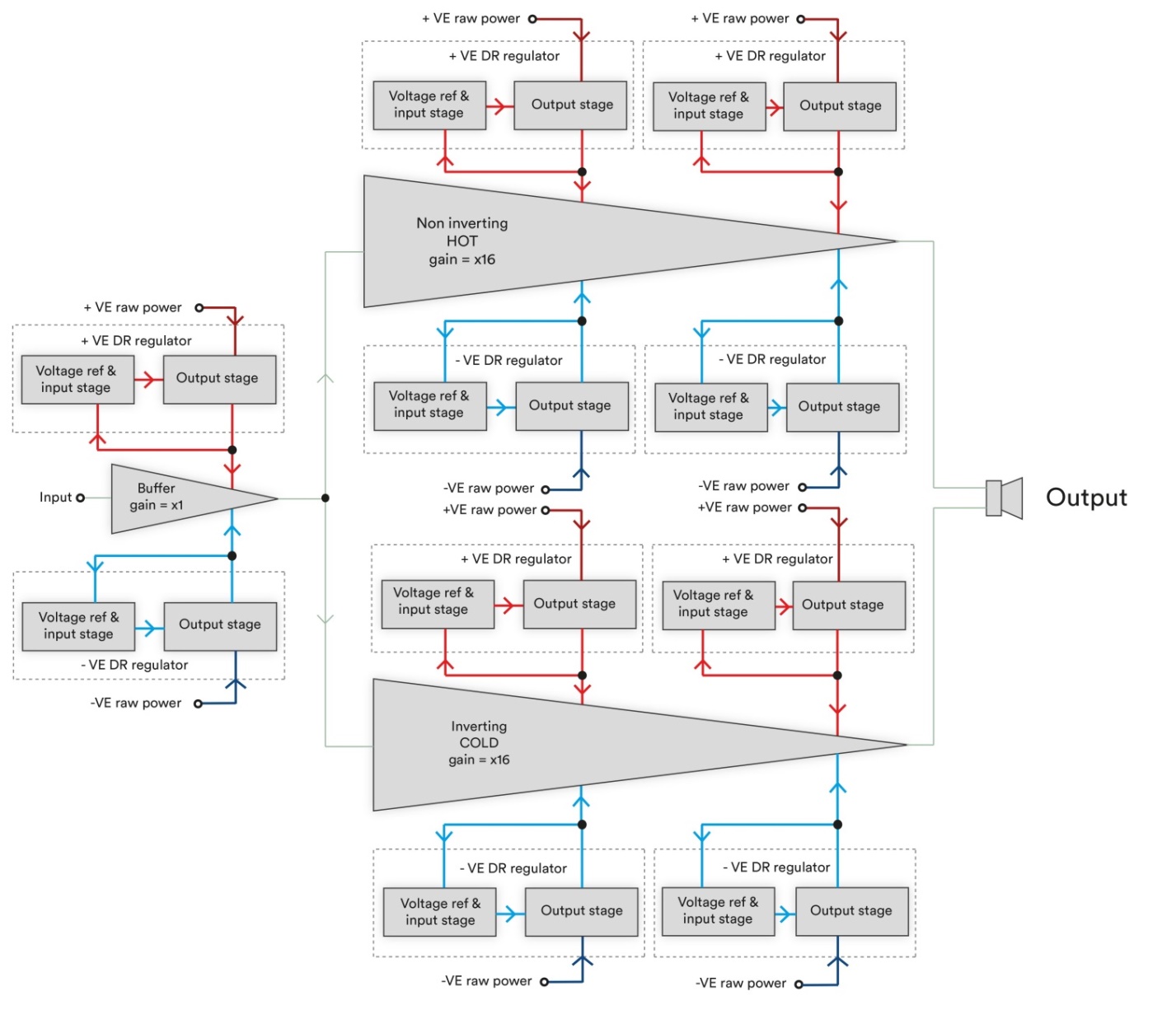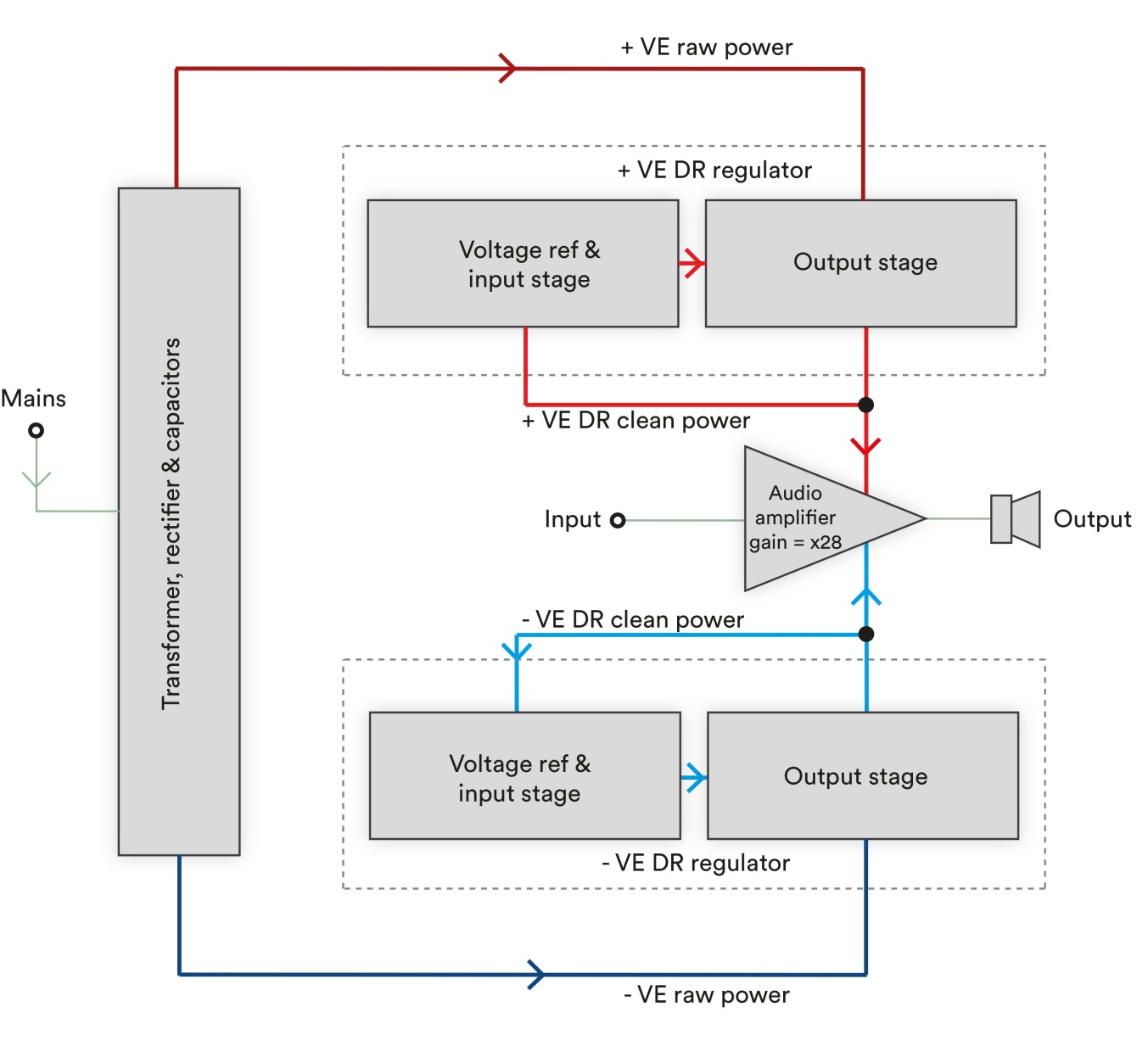By tackling one of the fundamentals of amplifier design – the provision of the cleanest possible power to each part of the signal chain within an amp – Naim’s latest Discrete Regulator amplifiers bring you even closer to the music.
The ideal for a power amplifier looks simple: the relatively low-level signal from the preamp goes in one end, and out the other comes the same signal, increased to enable it to drive a loudspeaker. That’s it: nothing added and nothing taken away – just a direct amplification of the signal.
Of course, it’s not that simple, and while the old idea of ‘a straight wire with gain’ sums up what a power amp should be doing, a whole load of other factors are brought to bear in any design: the need for each section of the amp to do its job as optimally as possible, the different (and varying) load speakers present to the amplifier, and the need to keep the whole plot stable and reliable under a wide range of conditions, both physical and musical.
Fundamental to the way any amplifier works is the way its powered, and it really isn’t as simple as ‘…want more power? Fit a bigger transformer!’ Each part of an amplifier has its own power requirements, from the input stage all the way through to the output transistors, which correspondingly means each section needs its own power supply.
Again, that sounds simple enough, and most hi-fi products have several secondary windings on their power transformers, providing different voltages to the various parts of the amplifier, or serving the different sections of, say, a CD or network player to avoid noise passing between those sections. Some manufacturers even use multiple transformers; having one for each channel in a stereo power amplifier for example, or for the digital and analogue sections of a player. This isn’t a path Naim follows – we prefer to use just one large primary transformer to supply the whole product.
Naim Electronic Design Director Steve Sells explains the thinking behind this: ‘A single large transformer has a lower impedance and so charges PSU reservoir capacitors faster than two smaller transformers. This in turn allows the mains conduction angle to be shorter, essentially allowing the PSU to be disconnected from the mains for a longer time.’
Naim Audio NAP 500 DR:


















